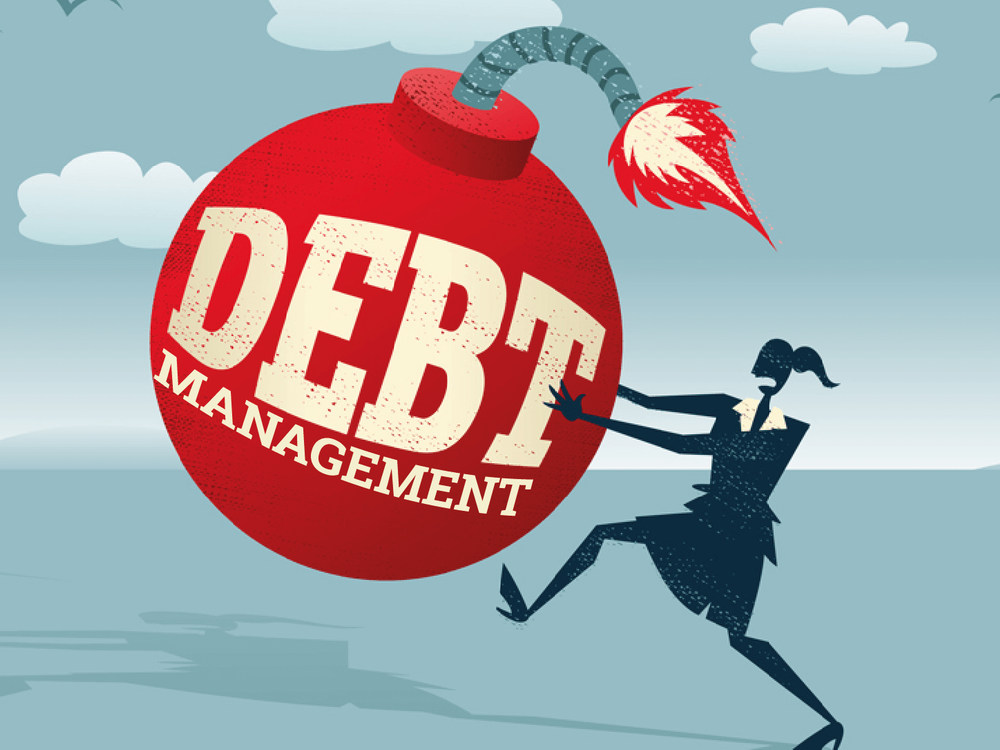Understanding the Process of Financial Obligation Debt Consolidation: More Discussion Posted Here
Understanding the Process of Financial Obligation Debt Consolidation: More Discussion Posted Here
Blog Article
Every Little Thing You Need to Learn About Creating a Personalized Financial Debt Administration Plan
In the world of individual finance, devising a customized debt monitoring strategy is commonly the cornerstone of attaining economic security and tranquility of mind. As you navigate the complexities of creating a personalized financial obligation management plan, recognizing the details of each action is essential to your financial success.
Evaluating Your Existing Financial Debt Scenario
One need to first perform an extensive examination of their present debt commitments before developing an effective debt administration strategy. Produce a comprehensive listing of each financial debt, consisting of the total amount owed, interest rates, minimum regular monthly repayments, and due dates.
After compiling this info, determine your overall debt-to-income proportion by separating your monthly financial obligation payments by your regular monthly revenue. Understanding these facets of your economic circumstance will lead you in developing a personalized debt management strategy tailored to your particular needs and goals.
Setting Financial Goals and Targets

When establishing financial objectives, it's crucial to be details, measurable, achievable, pertinent, and time-bound (WISE) As an example, you could establish a goal to pay off a certain quantity of financial debt within a specific period, such as minimizing your bank card balance by $5,000 in the following twelve month - More Discussion Posted Here. By establishing clear targets similar to this, you can track your progression and stay encouraged to attain your financial obligation administration purposes
Additionally, consider prioritizing your debts based upon variables such as passion rates, superior equilibriums, and payment terms. By concentrating on high-interest financial debts initially, you can conserve money over time and increase your trip toward financial freedom. Keep in mind, everyone's monetary situation is one-of-a-kind, so tailor your goals and targets to fit your private requirements and circumstances.
Creating a Realistic Spending Plan
Crafting a distinct spending plan is a fundamental action in reliable debt management and economic preparation. A practical spending plan acts as a roadmap for your financial wellness, assisting you track your earnings, expenses, and debt repayments. To create a functional budget, start by detailing all your incomes. This includes your wage, side rush earnings, or any various other financial inflows. Next, directory all your fixed costs such as rent or home mortgage, utilities, insurance, and car loan settlements. Variable expenses like grocery stores, amusement, and transportation should also be included. Distinguish between wants and needs to focus on useful link vital expenses and determine areas where you can reduce back.
Consistently evaluation and change your spending plan as needed to stay on track with your monetary goals and financial debt repayment plan. By sticking to a sensible budget, you can efficiently handle your financial debt and work towards an extra safe and secure financial future.
Discovering Debt Settlement Methods
After developing a practical budget, the next crucial action in effective financial debt management is to check out various financial obligation payment methods. One typical strategy is the snowball approach, where you concentrate on settling the tiniest financial debts initially while making minimum repayments on larger debts. This approach can assist construct momentum as you see smaller sized debts being removed, giving inspiration to deal with bigger ones.
One more technique is the avalanche approach, which includes prioritizing financial debts with the highest possible rate of interest rates. By targeting high-interest financial obligations initially, you can decrease the total amount you pay in passion in time. This technique might be much more affordable over time, despite the fact that it might take longer to see individual debts these details totally repaid.
Financial debt combination is another option where you incorporate numerous financial obligations into a single financing with a reduced rate of interest. This can simplify your settlement process and possibly lower the overall passion paid. However, it's necessary to carefully think about the costs and terms related to combination to ensure it's the appropriate option for your financial circumstance.
Surveillance and Changing Your Strategy

Changing your plan may include reapportioning funds to deal with high-interest financial debts first, working out with creditors for reduced rates of interest or better settlement terms, or exploring added earnings resources to quicken financial debt payment. As your financial situation develops, your financial obligation management plan must adapt appropriately to continue to be reliable. By staying positive and versatile in monitoring and adjusting your plan, you can maximize your initiatives towards repaying your financial obligations effectively and attaining your financial objectives.
Final Thought
To conclude, creating a personalized financial obligation monitoring plan entails evaluating present financial debt, establishing financial goals, producing a reasonable budget, checking out settlement approaches, and tracking and changing the plan as required. By complying with these steps, people can take control of their financial scenario and job towards coming to be debt-free. It is crucial to remain self-displined and committed to the strategy in order to accomplish long-term economic security.
One should initially conduct a thorough evaluation of their present financial debt responsibilities before developing a reliable financial debt administration plan.After establishing a realistic spending plan, the next crucial action in reliable debt administration is to explore different debt payment strategies - More Discussion Posted Here.To effectively manage your financial obligation, continuous monitoring and change of your debt administration strategy are necessary parts for long-lasting economic security.Changing your strategy may include reapportioning funds to take on high-interest financial obligations first, you could try this out working out with creditors for reduced interest prices or far better repayment terms, or discovering added revenue resources to quicken debt payment.In verdict, producing an individualized financial obligation administration strategy entails assessing current financial debt, setting economic goals, developing a realistic spending plan, checking out payment methods, and tracking and adjusting the strategy as needed
Report this page